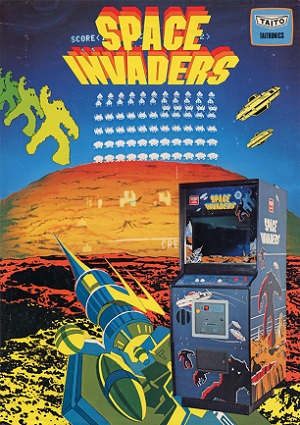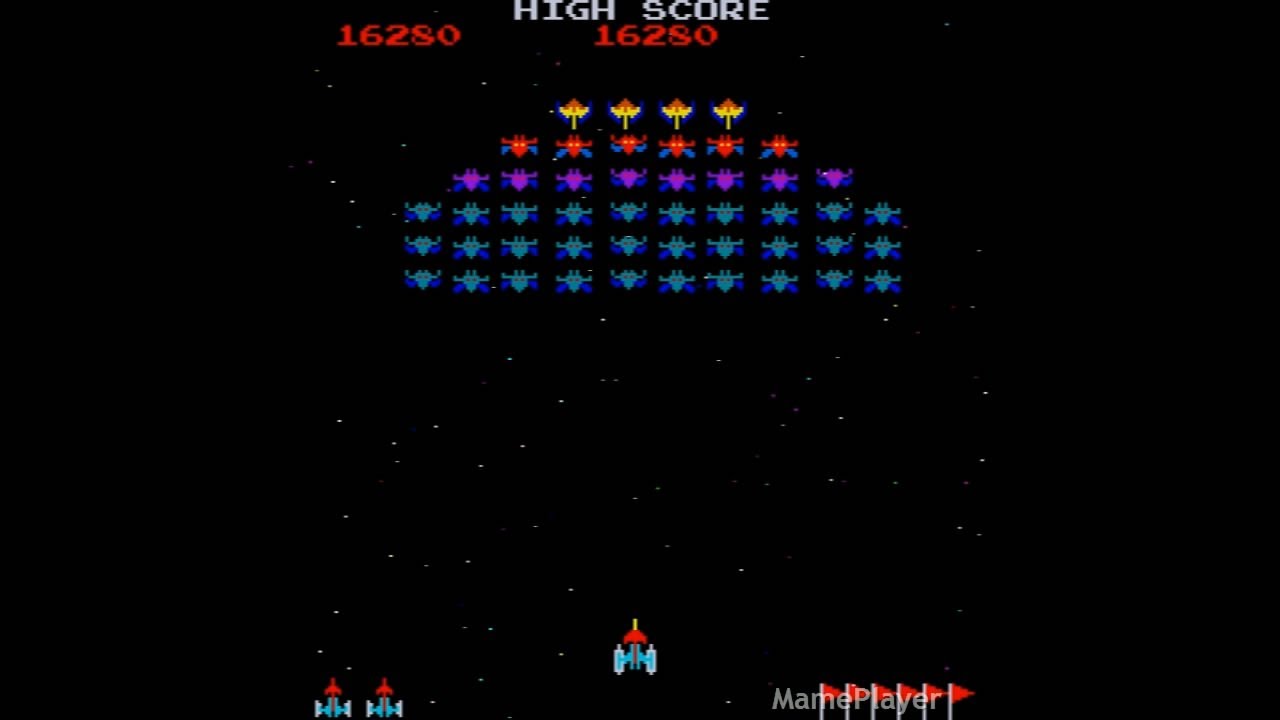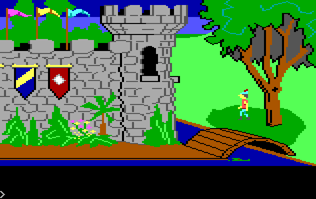Arcade Golden Age
The golden age of arcade video games is defined as the peak era of arcade video game popularity and it's usually positioned between late 70s and mid 80s. By this time the graphics, altough already quite good-quality, were still pretty basic and not able to play a key role in a game success. Instead the developers had to rely on simple and funny gameplay.1
Games
Arcade games are coin-operated entertainment machines, usually installed in public spaces. An arcade game has to be simple, intuitive, with highly increasing level difficulty and the player is essentially renting the game for as long as their in-game avatar can stay alive.2
The first and most important
Space invaders was developed by Tomohiro Nishikado and released in 1978. It had two-dimensional fixed gameplay and the aim consisting in defending the earth from aliens by shooting their space ships down. In fact it was one of the earliest shooting games.
Besides being one of the most famous arcades that firmly entered in the pop culture, it has been referenced and parodied in multiple television shows, and it has been a part of several video game and cultural exhibitions. Later, the game will be the inspiration for other video games, re-released on numerous platforms and several sequels.3
Galaxian was designed by Namco and released in 1979 to compete with Space Invaders. It had a very similar design and gameplay, but in contrast to Space Invaders, Galaxian added an element of drama by having the aliens periodically make kamikaze-like dives at the player's ship. This made it the first game to feature enemies with individual personalities.
Galaxian took RGB color graphics a step further with multi-colored animated sprites and explosions, different colored fonts for the score and high score, the scrolling star field, and graphic icons that show the number of lives left and how many stages the player had completed.4
King's Quest is a classical arcade video game series from golden age. Developed by Sierra Entertainment the first game was released in 1984, and the latest came in 1998. The main characters are members of the royal family of the Kingdom of Daventry and the game passes through their various trials and adventures. Many of the quests consist in solving some item-based puzzles making it similar to another genre: puzzle-games. The world of King's Quest encompasses many different kingdoms and supernatural realms. Technologically, the series pioneered the use of animation and pseudo-3D environments in graphic adventure games.5
Donkey Kong was released by Nintendo in 1981. One of the first platform games, it consisted in the main character maneuvering while dodging moving objects as obstacles. Featuring 4 completely different levels the game was one of most elaborated arcade of the time. It was very popular in North America: overall Nintendo earned 180 million dollars selling around 60000 Donkey Kong machines.6
Released in 1980 by Namco Pac-Man is considered one of the classics of the video game industry. Very simple it consisted in main character moving around eating dots and fruits without being catched by four enemies. Before it the most popular arcades were space shooter but this game succeeded by creating a new genre and appealing to both genders.7
Another genre defining game, or it's better to say a series of games, was Street Fighter which consisted in choosing one of many available characters and compete in a martial arts tournament. The first edition was released in 1987 by Capcom. Each character has his own unique fighting style. The player can perform three types of punch and kick attacks, each varying in speed and strength, and three special attacks.8
Technologies
It was during this period that RGB color graphics became widespread, following the release of Galaxian in 1979. At around the same time, arcade video games began shifting away from single-screen titles towards scrolling games. The Golden Age also saw developers experimenting with vector displays, which produced crisp lines that couldn't be duplicated by raster displays. However, vector technology fell out of favor with arcade game companies due to the high costs. Several developers were also experimenting with so called pseudo-3D. This period also saw significant advances in digital audio technology, for example Space Invaders in 1978 was the first game to use a continuous background soundtrack.1
External Links
- [visited on 06.11.2014] Wikipedia on golden age of arcade.
- [visited on 06.11.2014] Wikipedia on arcade.
- [visited on 06.11.2014] Wikipedia on Space Invadors.
- [visited on 06.11.2014] Wikipedia on Galaxian.
- [visited on 06.11.2014] Wikipedia on King's Quest.
- [visited on 06.11.2014] Wikipedia on Donkey Kong
- [visited on 06.11.2014] Wikipedia on Pac-Man
- [visited on 06.11.2014] Wikipedia on Street Fighter
- [visited on 06.11.2014] Space Invaders logo
- [visited on 06.11.2014] Galaxian screenshot
- [visited on 06.11.2014] Kings's Quest screenshot
All images are fair use intended.


